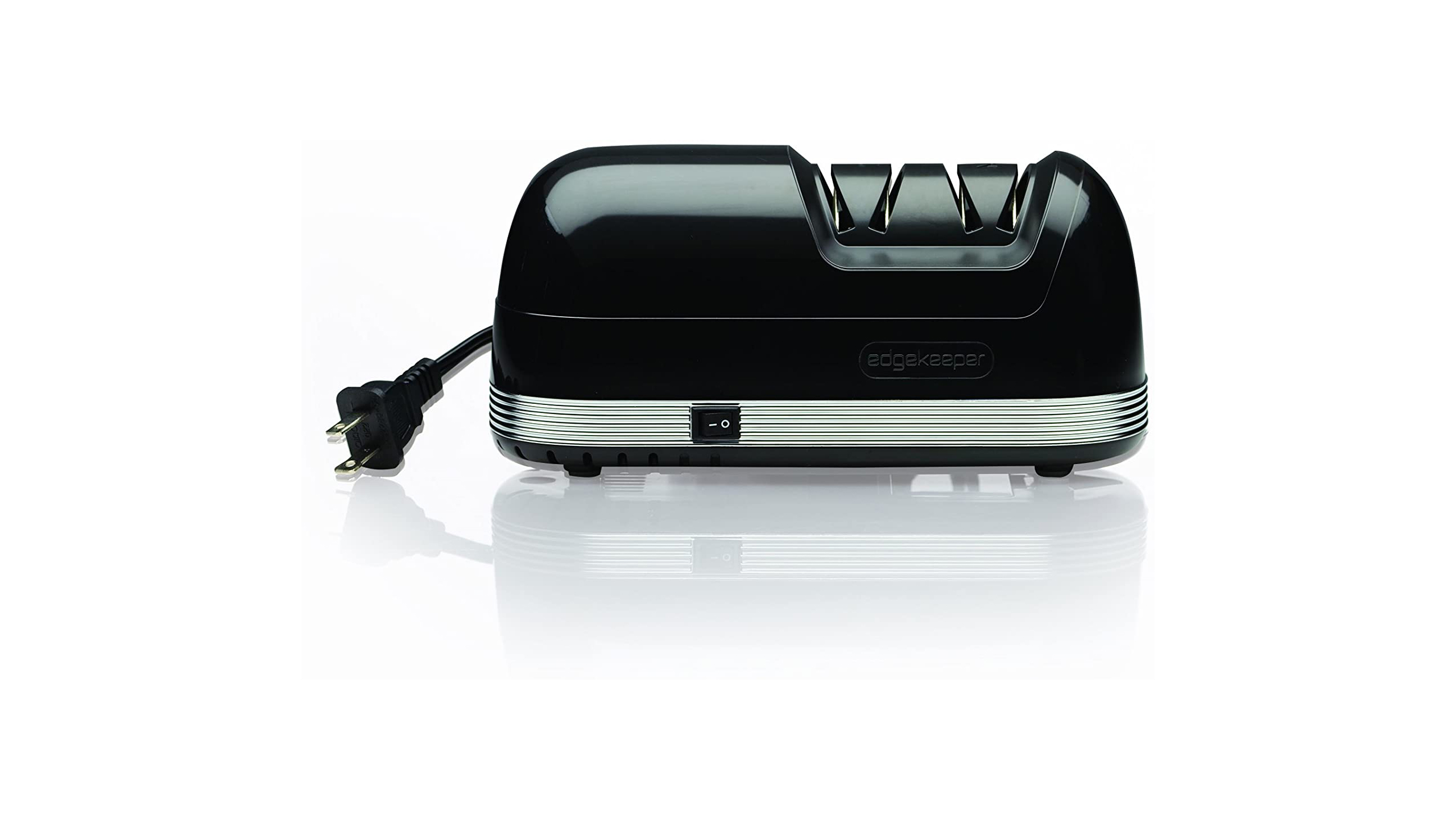When we first started dating, my partner and I traveled to each other on most weekends — spending a few days either in her New York apartment or mine in Washington, D.C. And after I wrote about a highly-rated knife sharpener on sale earlier this week, she reminded me that I’d brought my own knife sharpener with me to New York on our third weekend together, and proceeded to sharpen all of her knives. She (thankfully) found it endearing.
The story helped me realize how much I prioritize sharpened cutlery — it’s so crucial to my chop-chop-heavy cooking that I take for granted how uncommon it is for people to do the same. I so often pick up a knife — when summoned to help out at a dinner party — and find it’s dull.
“Many people are intimidated by the idea of sharpening their knives and think it’s really hard to do, but that’s not the case,” says Jill Albertelli, the VP of Business Development at Sasaki Cutlery. “There are many products available that guide you through the process, making it an easy task you’ll wish you tried sooner.”
Indeed, there are various ways to keep your knives sharp and, while some are more intense and time-consuming than others, you can definitely find one that best fits your needs. Albertelli gave me some tips on the best approach you should take to begin sharpening your knives, and why you should consider doing so in the first place. One thing to always keep in mind: Dull blades are dangerous.
“Sharp knives cut food more easily than dull knives and keep the blade in better contact with the food, which is safer for the user when cutting,” she said. “When you use a sharp knife, you don’t have to apply a lot of pressure — the blade should slide effortlessly through the food, making culinary prep tasks safer and easier.”
Know when to sharpen and know when to hone.
First thing to figure out is whether you want to sharpen your knife or hone it.
Sharpening a knife basically cuts into it to achieve the desired angle, so some debris will be left behind. It’s highly efficient and when done right, long lasting, so you “will likely only need to sharpen your knife blades a few times a year,” Albertelli said.
Honing a knife “realigns the blade edge without removing material, helping to keep the blade sharp for food prep tasks,” she said, adding that you can definitely hone your knives more frequently.
“Someone who cooks a lot may prefer to hone the blade edge every time they use their knife,” Albertelli said, “while those who cook less often may only hone their knives every few weeks or months.”


Sharpen your cutlery with the right tools.
Your knife is likely — or should be — a stainless steel blade with some carbon in it. And that means you have some options.
Electric Sharpeners
“To sharpen a fine edge knife with stainless steel blades,” Albertelli advised, “It’s best to use a multi-stage handheld sharpener, or an electric sharpener with a two-stage process.”
- The first stage removes microscopic and dull or misaligned metal from the blade, she said.
- The second stage smooths and polishes it, which gives you “a sharp, precision edge” for improved performance.
While it’s mostly self-explanatory, to use an electric sharpener correctly, be sure to “slowly draw the knife blade through each slot several times, from heel to tip, alternating sides to ensure even sharpening on both sides of the blade.”


Sharpening Stones

Sharp Pebble Premium Whetstone, $38 on Amazon. Smith's Arkansas Sharpening Stones System, $25 on Amazon.
If you’re sharpening a higher quality Japanese or German steel knife blade“you want a sharpener with a whetstone, which can take a little more time to perfect,” Albertelli said.
While stone sharpeners sometimes require the use of oils and other accompanying products, some are designed to make your life easier. The top-rated and best selling Sharp Pebble whetstone, for example, relies on water for its stone sharpening so you don’t have to muddle into oil.
If you want to take your blades to that higher level, check out the best selling stone sharpeners to find the best one for you.


Hone your cutlery with the right tools.
Remember, honing your knives is a more regular and appropriately quicker method to maintain your knives.
Tools to help you hone a knife blade include sharpening steels, handheld sharpeners, in-block sharpeners, and in-sheath sharpeners.
The different styles really come down to your convenience and ease-of-use, each presenting a different option to make your life easier.
The Sabatier Edgekeeper, for example, includes in its sheath a built-in device that “hones the blade every time you take it in and out of the protective cover, ensuring you have a sharp knife with every use,” Albertelli explained. I personally love this idea. It’s like Google Docs auto-saving my documents or the carrying case charging my truly wireless headphones.

On the flip side, using a sharpening steel or rod is much more intimate and maybe even therapeutic. Once you get the hang of the infinity motion to use the honing steel, it can be a very relaxing way to start your cooking for the night.

“Honing a knife may seem like a movie or TV show cliche, but it’s incredibly important to maintaining your knives. It took me a while to believe it did anything, but there’s a noticeable difference to a blade edge after using it, even without having to touch it to feel the sharpness,” Scouted editor Jillian Lucas told me. “You get into a rhythm of honing, counting how many times you do it on each side so you’re not overly honing on one side of the blade.”
With an abundant supply of affordable products and the accompanying guidance to help you learn how to keep your blades sharp — and how to save time maintaining them — there’s little reason to procrastinate. You should really start using sharp blades today to get better and safer about your cooking.
Scouted is internet shopping with a pulse. Follow us on Twitter and sign up for our newsletter for even more recommendations and exclusive content. Please note that if you buy something featured in one of our posts, The Daily Beast may collect a share of sales.





